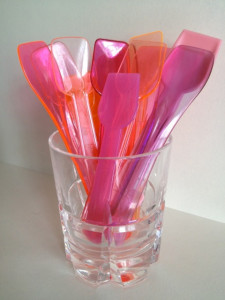 This post is part of a series of excerpts from my forthcoming book. You can read them all in the Little Pink Spoons category. You can get advance notice of the book by subscribing to my Creative Adventure Journal over there to your right.
This post is part of a series of excerpts from my forthcoming book. You can read them all in the Little Pink Spoons category. You can get advance notice of the book by subscribing to my Creative Adventure Journal over there to your right.
The Wheel
Throughout history, the wheel has been generally recognized as humanity’s first great invention. The word wheel is derived from a Proto-Indo-European word that means to revolve or move around. Always circular, often spoked and capable of rotating on an axis, the wheel made it possible for humanity to move across distances, to transport goods and to develop machines for achieving previously impossible tasks. Revolution empowered evolution.
The wheel is thought to have originated in ancient Sumer (modern Iraq) around 5000 BC, when it was created for throwing pots. Over the next several thousand years, it showed up in India and Pakistan on burial carts, in southern Poland on four-wheeled wagons, in China on chariots, and in Europe. The appearance of spoked wheels around 2000 BC made vehicles lighter and faster. As time went on, wheels were adapted to create new technologies, such as the water wheel for milling, the spinning wheel and ancient instruments of astronomy.
The Wheel as Metaphor
With its revolutionary impact on humanity through the millennia, it is not surprising that the wheel also took on strong cultural and spiritual significance. Across cultures and epochs, it became a metaphor for the cycles of life and the processes of growth and change. It still has deep symbolic meaning in most religions today.
The Wheel of Fortune.
For the Romans, the wheel was associated with the sun (as the wheel of a chariot that moved across the sky) and thus with life. The goddess Fortuna held the Wheel of Fortune in her hand, causing lives to change as she spun it, some for the better, some for the worse. Consequently the wheel endured for centuries as a symbol of the capricious nature of fate.
Ezekiel’s Wheel.
In Judaism, the wheel is associated with Ezekiel’s vision (Ezekiel 1:15–22), in which he sees four creatures descend from heaven. Twice, he says of these creatures, “the spirit of the living creatures was in the wheels.” “Wherever the spirit would go, they went, and the wheels rose along with them; for the spirit of the living creatures was in the wheels.”
The Rose Window.
In Christianity, the wheel motif appears in almost every major cathedral in the world, in the jewel-toned emblem of the rose window. From the Roman oculus, a round skylight, the rose window developed in the French Gothic period, when geometry played a symbolic role in cathedral design. Every angle carried meaning.
The Mandala.
The wheel is also a central feature of dharmic religions, such as Hinduism and Buddhism, in the mandala—a representational sacred space of concentric circles from its outer edge to its ornately decorated central square. For thousands of years, Tibetan Buddhist monks have painstakingly created mandalas in intricate patterns of colored sand as metaphysical symbols of the cosmos, a microcosm of the Universe from the human perspective. Many Tibetans also pray using a prayer wheel, a cylinder on a stick with a strip of paper prayers wound inside, which they turn back and forth to release the prayers into the world.
The Medicine Wheel.
One of the most sacred traditions of the indigenous people of North America is the medicine wheel, symbolized by a configuration of 36 stones on the earth—a circle with a cross inside. The circle itself, also known as the sacred hoop, represents different stages of physical life and the influence of the nonphysical world as well. According to Jamie Sams, author of Sacred Path Cards, “This symbol of all of life’s cycles has given the People of Native America an evolutionary blueprint for centuries. Each cycle of life is honored in a sacred way, giving us a way to see the value of each step of our pathway and a new understanding of our growth patterns.”
And you?
Q: What area of your life could you honor by recognizing it as part of the cycle of life?
Start where you are. Share your story with other readers. Leave a comment.
Continued next Monday…
To be sure you don’t miss an installment, sign up for Blog Alerts. Just fill in the top box over to the right there to get email updates. In the meantime…
Live CREATIVE!
